#History
Tycho's Illustrated History Of Chinese Cars: The Benz-like Vehicles Of Bamin Auto
The Chinese Army was a great admirer of Benzes, so much that they built their own. Bamin State Automobile Works, or Bamin Automobile for short, was based in Minhou in Fujian Province. The company was owned by the Chinese army, it was also called the ‘PLA 7427 Works’. Bamin Automobile started business in the late 1980′s with a local licensed variant of the Beijing 212; the Bamin BM212A/BM213A.
Question: What Was the First Car You Remember Riding In?
Mother’s Day last weekend got me to thinking about the first car ride I ever took: a cruise home from the hospital in my parents’ 1956 Olds 88. Thing is, that car got destroyed by a combination of Minnesota rust and Minnesota deer a few months later and I don’t remember it. My first identifiable car memory involves crawling around on the slippery blue vinyl back seat (without benefit of baby seat or even seat belts) of my dad’s late-60s company car: a 1967 Ford Custom 500 sedan with three-on-the-floor and overdrive. What’s yours?
Neil Armstrong's 1967 Chevrolet Corvette 427 For Sale
As a teenager, I idolized Tom Wolfe after reading Bonfire of the Vanities. By the end of high school, I had read every single book read by him, and his too-brief description of the muscle cars of American astronauts in The Right Stuff instantly came back to me (along with the smells of my high school cafeteria) upon seeing this ad.
When A Nissan Won The Daytona 24 Hours
The early 90s were tough times. Stock markets had crashed, real estate bubbles had popped, budgets were slashed. The fabled Daytona 24 hours endurance race survived (barely) with Rolex as a sponsor.
In 1992, the field was down to 49 cars, one of them a newcomer from Japan, Number 23, fielded by Nissan’s Nismo (Nissan Motorsports International) factory team.
Return Of Sakura And Fuji: The Dogged Datsuns Run Again
and came home with a trophy? This story has a sequel.
In 1958, two Datsuns, named “Fujii” and “Sakura” entered the Mobilgas Trial, 10,000 miles all around Australia. Surprisingly, “Fuji” won its class title. “Sakura” finished fourth.
Half a century later, the cars were found in a warehouse in Japan.
Saab: The Eulogy
Brethren, we are once again gathered together to mourn the passing of another automobile company. Saab was of that rare breed of car that always had a band of devoted, aye, fanatical followers. In her prime, Saab could not fail to ignite the after-burners of anyone with a predilection to genuine character, speed, innovation, intelligence, and even sexy good looks (at times). Not bad for a company that never once designed a clean-sheet new engine and borrowed more platforms than Heidi Klum. But when you’re small and from Sweden, resourcefulness is essential: Saab finagled an existence in this brutal industry far longer than might have been expected. But now she joins an august group of other fallen automotive heroes in Valhalla: Borgward, Panhard, Tatra, Kaiser, Glas, TVR, Jowett, etc…better that then whoring herself to another rich benefactor. But Saab’s story is worth retelling.
That Took Guts: How A Funky Little Datsun Won The World's Cruelest Rally
It was known as “The World’s Cruelest Rally:” The Mobilgas Trial, 10,000 miles all around Australia. In 1958, there were two entries, regarded as a joke by the burly Aussies: A pair of tiny Datsun 210s, named “Fuji” and “Sakura”.
The suicidal idea was had by marketing manager Yutaka Katayama. Aged 102 years, he is still alive to tell the story:
"America's Car Museum" Rises In Tacoma
The LeMay Museum in Tacoma, WA won’t be completed until June, but the NY Times reports that it aims to become on of the premiere automotive museums in the country, rivaling collections like the Peterson and Harrah museums. And at 165,000 square feet, the building that is rising in Tacoma needs to be huge: though “only” 750 vehicles will be exhibited at a time when the building is done, the LeMay collection is far larger than that. Although even curator David Madeira isn’t sure how many vehicles actually belong to the collection.
“I don’t know,” Mr. Madeira said recently in an interview at The Times, when asked how many vehicles were in the possession of Harold LeMay, the garbage-disposal magnate whose collection of American automobiles would comprise the majority of the museum’s holdings. Mr. LeMay, who died in 2000, was prone to buying a barn or even a field containing old automobiles just to prevent their contents from landing in a junkyard. “He was not a connoisseur; he was a true collector,” Mr. Madeira said.
Once holding at least 3,500 vehicles, the collection has been cut to “north of a thousand” aimed at representing the sweep of American automotive history. And those will be joined by vehicles from the collection of watchmaker Nicolai Bulgari in order to create an automotive museum that founders hope lives up to the name “America’s Car Museum.” Since it’s right up I-5 from me, I’ll be sure to report on the collection and whether it reaches that lofty goal when it opens to the public next summer.
ZAP Still Alive, Alias Still Coming (Or Not)
The SUV That Might Have Been: The Marmon-Herrington Rhino
Axle and transfer case-maker Marmon-Herrington is still around, supplying OEMs and the aftermarket alike with up-rated drivetrain components. But back in the ’40s and ’50s, the firm designed its own vehicles as well, from an air-droppable tank, to a South African armored car, to monocoque electric trolley buses. Its predecessor company, Marmon Motor Car Company, even built the first car to win the Indy 500, the Marmon Wasp. Sadly this beast, an experimental amphibious off-road (on-marsh) vehicle called the Rhino ( more here), was never produced. Otherwise, the Marmon name might have been exhumed during the ’90s SUV boom by a bespoke coachbuilding firm, offering specially-bodied medium-duty truck chassis bearing the brand name that won the first Indy 500 and parachuted into Nazi Germany. Imagine the possibilities…
Martin Winterkorn Less Impressed By New (European) Honda Civic
Remember the video of Volkswagen CEO Martin Winterkorn testing the quality of the new Hyundai i30? Thanks to Autobild, we’ve found a companion video from the Frankfurt Show, in which Winterkorn, along with VW Chairman Ferdinand Piech, gives the once-over to the new European-market Honda Civic. According to Autobild, Piech kept his nickname “Fugen-Ferdi” (Gap-Ferdi) relevant by checking the new Civic’s panel gaps. And, in contrast to the Hyundai video, the intelligible portions of Winterkorn’s commentary were less than entirely complimentary. The German magazine reports
A member of the VW entourage says that “(Honda) has had good role models.” But the big boss played down the praise for VW with a smile, and responded generously “they were once a role model for us.”
Note the use of the past tense, then contrast with Winterkorn’s reaction to the Hyundai. In just two videos you can see the balance of automotive power shifting…
What's Wrong With This Picture: This Modern Unimog Edition
How much do things change in 60 years? Sometimes the best answer to that kind of question is a picture. Here you can see an original Unimog (right), built sometime between the start of production in 1948 and 1951, when Mercedes bought the operation in order to expand it enough to keep up with demand. On the left is a “60th Anniversary” Unimog design concept, celebrating not the actual birth of the Unimog, but its purchase by Mercedes. Needless to say, the contrast between the two is… breathtaking. And if you’re curious about the evolution of this hugely influential vehicle, if you can’t help wondering how it grew from a (relatively) tiny, spartan utility vehicle to a garish, Mercedes-starred behemoth, be sure to check out Bertel’s illustrated history of the Unimog. It makes you wonder what the next 60 years have in store for vehicles like this… [images courtesy: Autobild]
"Show Me Your Tatras": An Argument For Automotive Preservation
The question of automotive preservation jogged an unblogged memory loose today, from earlier in this chaotic summer when I was in Wolfsburg, Germany. I was touring the Zeithaus, or “House of Time,” in Volkswagen’s sprawling Autostadt, taking in the remarkably well-curated exhibit of some of the most influential and important cars of all time. Unlike the GM Heritage Center, for example, the Zeithaus is not reserved for VWs alone, but includes fine examples of undeniably iconic cars from various marques. Organizing VW’s official museum in this way gives the brand a sense of sophistication, sending the message that VW knows quality even when it’s not the one producing it. And the Zeithaus’s curators use this well, offering up such flattering (if ultimately apt) comparisons as an Audi A2 poised alongside a Citroen DS.
Are You Ready For: A National Register Of Historic Vehicles?
You may not have heard of the Historical Vehicle Association before, but it’s a 30,000-member advocacy group that actually emerged from a special insurance plan for historic cars offered by Hagerty Insurance. Now ratified by the Fédération Internationale des Véhicules Anciens, the HVA offers commissions on History, Skills and Trades, Technical Issues and Legislative Affairs, as it seeks to fulfill its mission of “Keeping Yesterday’s Vehicles on Tomorrow’s Roads.” One of its more laudable legislative tasks of late has been raising awareness about the damage caused by ethanol-blended gasoline and seeking to ban mandatory blending. But now it’s got another goal, as reported by Automotive News [sub]
The federal government has national registries for historic buildings, boats, airplanes, railways — you name it. But not for cars. And the Historic Vehicle Association is trying to change that…
A concern among enthusiasts is that government initiatives — such as the 2009 federal cash-for-clunkers incentive — could send many vintage cars to the crusher. Legislation might prevent cars from being destroyed. Or it could allow gas guzzlers to remain on the road if other laws preclude them.
As it so happens, my significant other is an Architectural Historian who spends her days evaluating buildings that could be impacted by federally-funded projects… so I hear about this issue (in terms of the Register of Historic Places) more often than you can even imagine. And it’s not as simple as it might seem…
Requiem For The Last American Car
[Editor’s note: Today, at 12:25 pm, the very last Panther-platform Crown Victoria rolled off the line at St. Thomas Assembly Plant. Ryan Paradis, a.k.a. “86er,” has the honor of eulogizing the beloved beast in his first-ever contribution to TTAC]
It has become beyond trite by this point to say that, with the end of the Crown Victoria, Grand Marquis and Town Car, an era comes to an end. And yet it is thus: the last of the body-on-frame, rear wheel drive and eight cylinder engine passenger cars, once a species unique to North America, have now reached the end of an 80 year span that commenced with the advent of the 1932 Ford V-8.
Having transported generations of Americans through some of the nation’s finest decades, full-size cars like the Crown Victoria, Grand Marquis, and Town Car are now an anomaly. While large V8-powered sedans made a comeback in the 21st century, the Ford Panther chassis was one of the very few full-size, rear-drive sedans that never left. And today we bid it farewell.



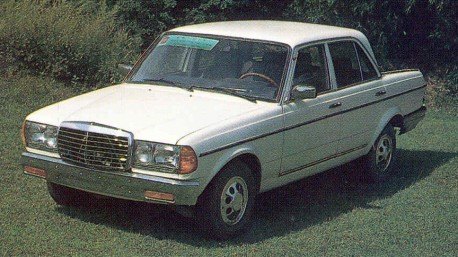

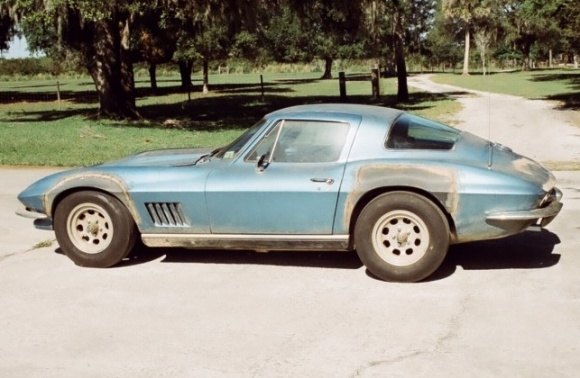

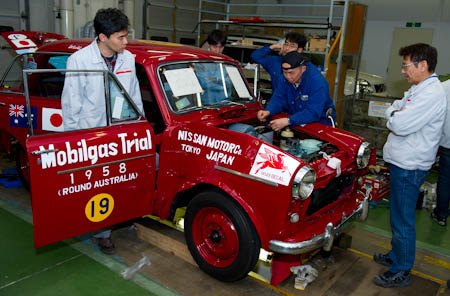

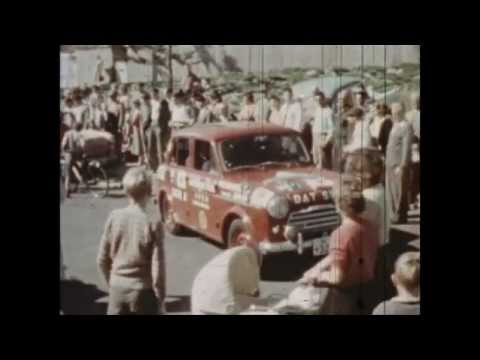


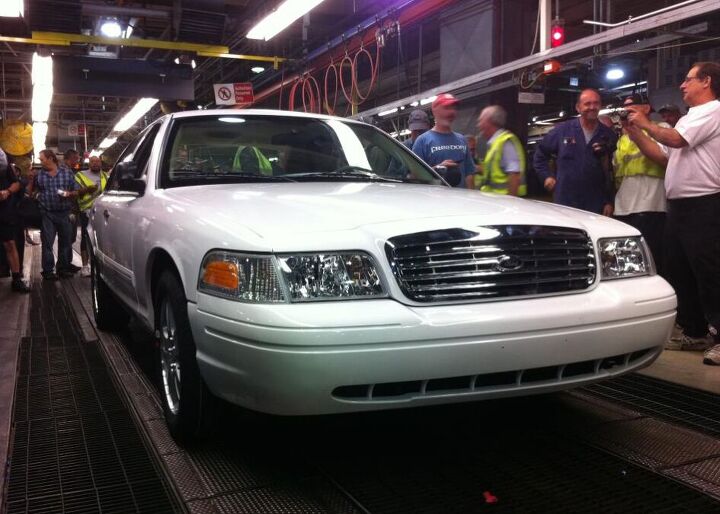












Recent Comments